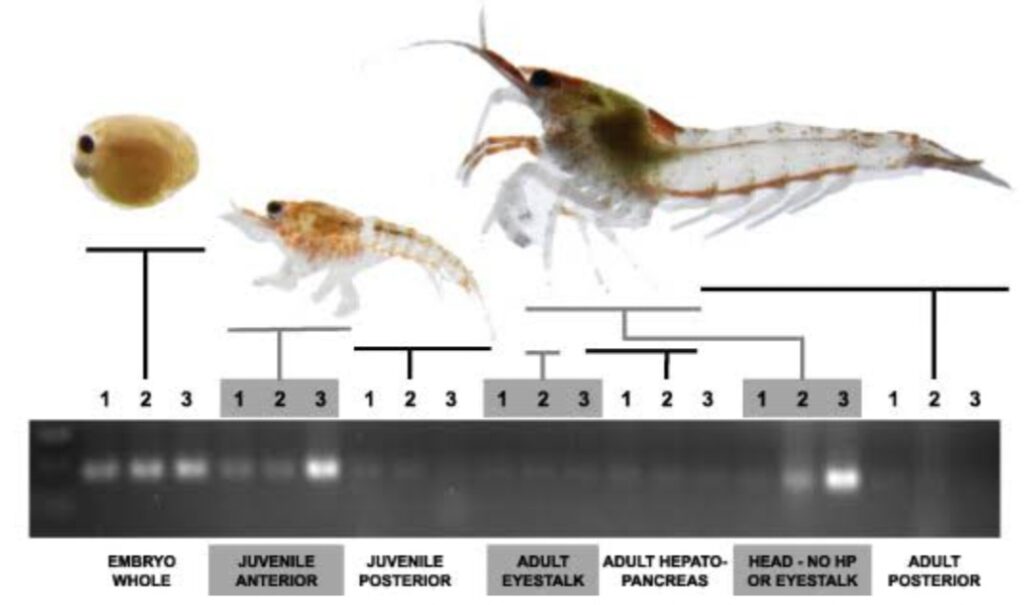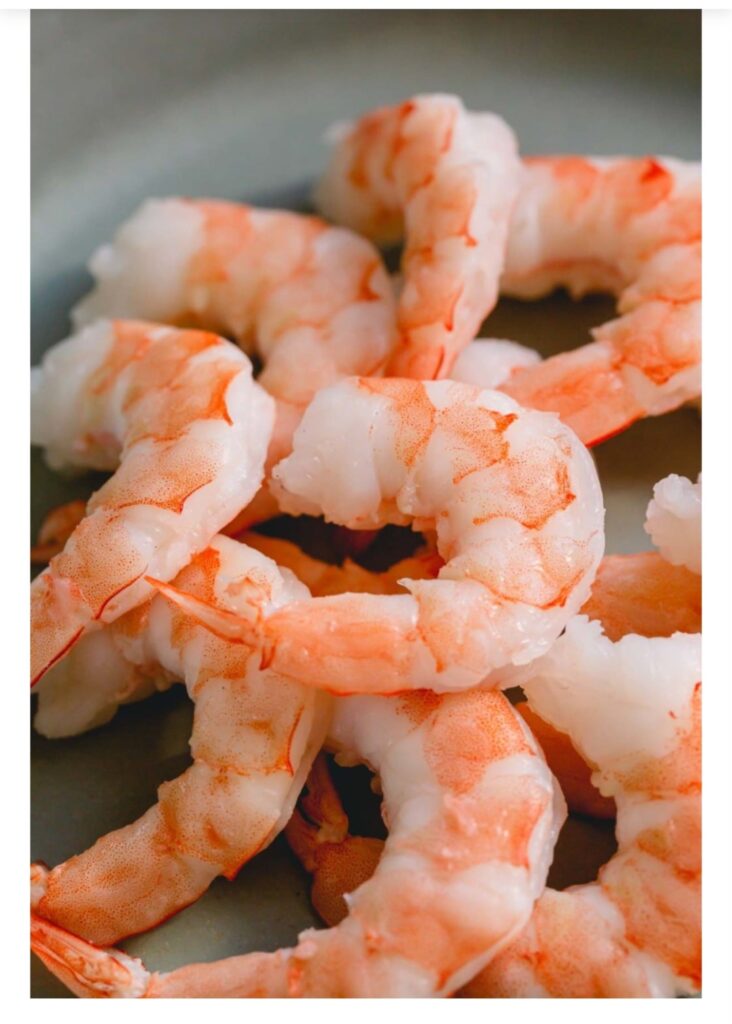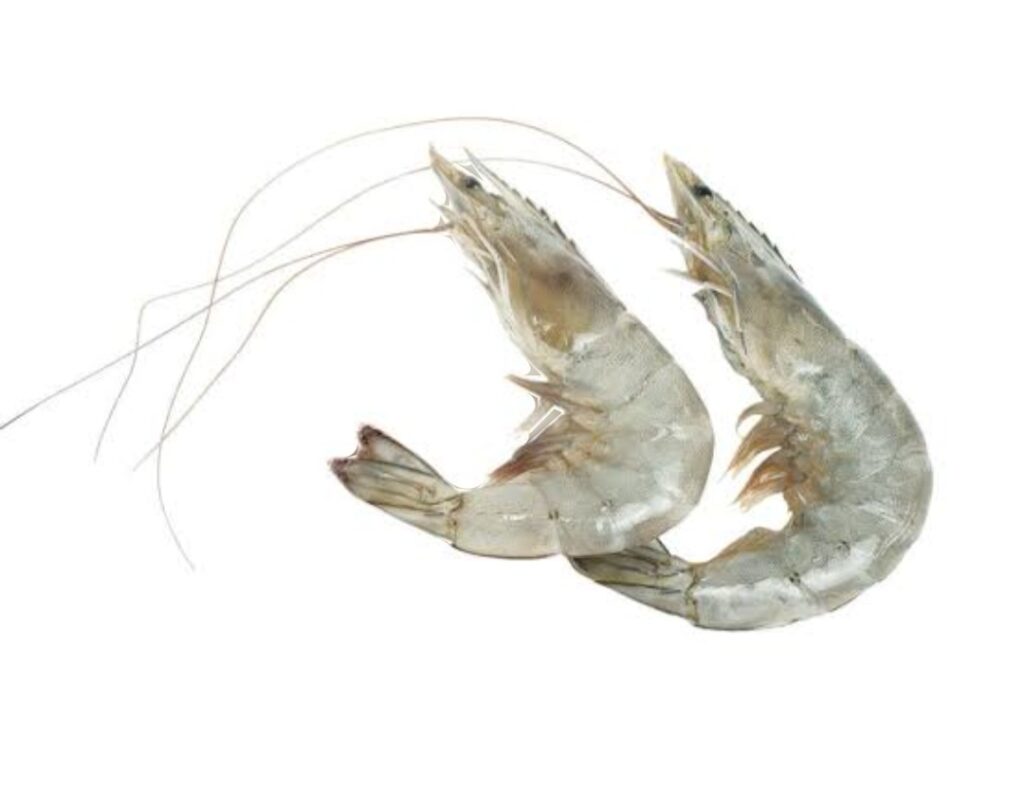
Shrimps farming is becoming popular and also increasing all over the world. The highest shrimps and prawn producer lies in the Asian continent where millions of shrimps or prawns are raised and exported to other continents.
Shrimps ( Penaeus spp) are invertebrates, Crustaceans with approximately 2,000 species belonging to the suborder Natantia, order Decapoda (which means “10-footed” because they have ten legs), and the class Crustacea. Close relatives include crabs, crayfish, prawns and lobsters.
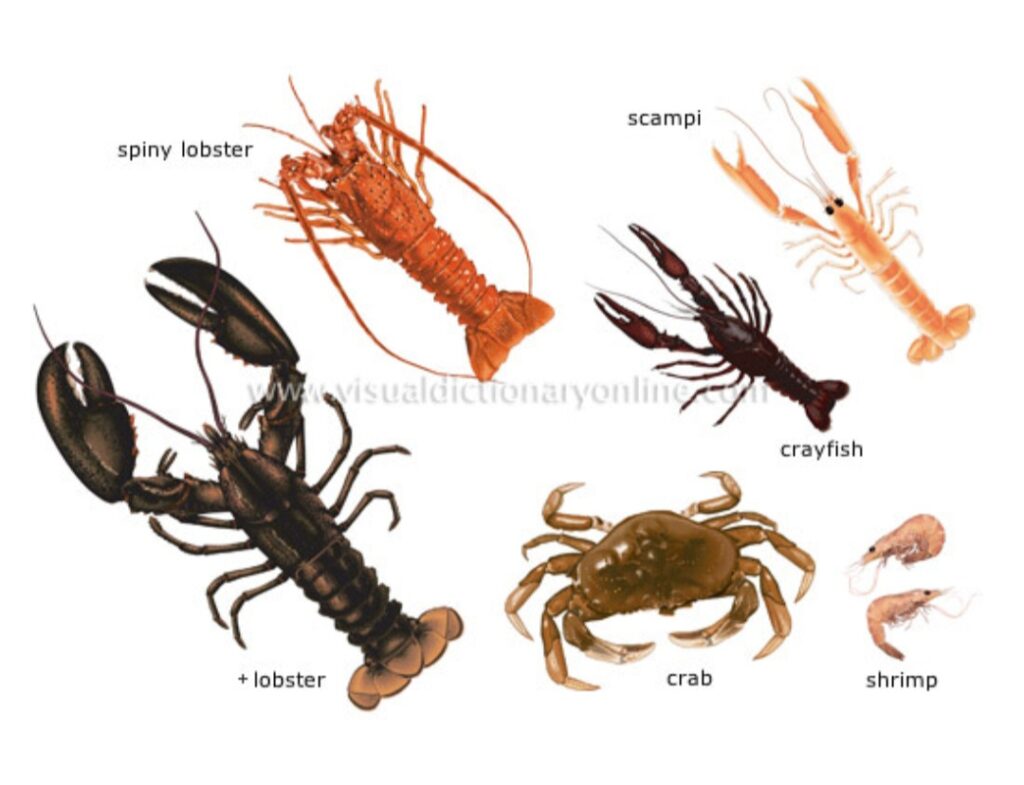
Shrimp are characterized by a semitransparent body flattened from side to side and a flexible abdomen terminating in a fanlike tail. The appendages are modified for swimming, and the antennae are long and whiplike. Shrimp swim backward by rapidly flexing the abdomen and tail.
Shrimps are found in all oceans, in shallow and deep water and in freshwater lakes and streams. Many species are commercially important as food. They range in length from a few millimetres to more than 20 cm (about 8 inches); average size is about 4 to 8 cm (1.5 to 3 inches).
Most people refer to larger individual shrimps as prawns. But they differ from one another.
DIFFERENCES BETWEEN PRAWN AND SHRIMPS
The names “prawn” and “shrimp” are often used interchangeably in culinary terms due to their similarity in taste and appearance. But they differ from one another.
They belong to thesame subphylum of Crustacean, including crabs, lobsters, crayfish, etc. They also belong to the order “Decapoda,” which means “10-footed” because they have ten legs. But they differ in the following ways:
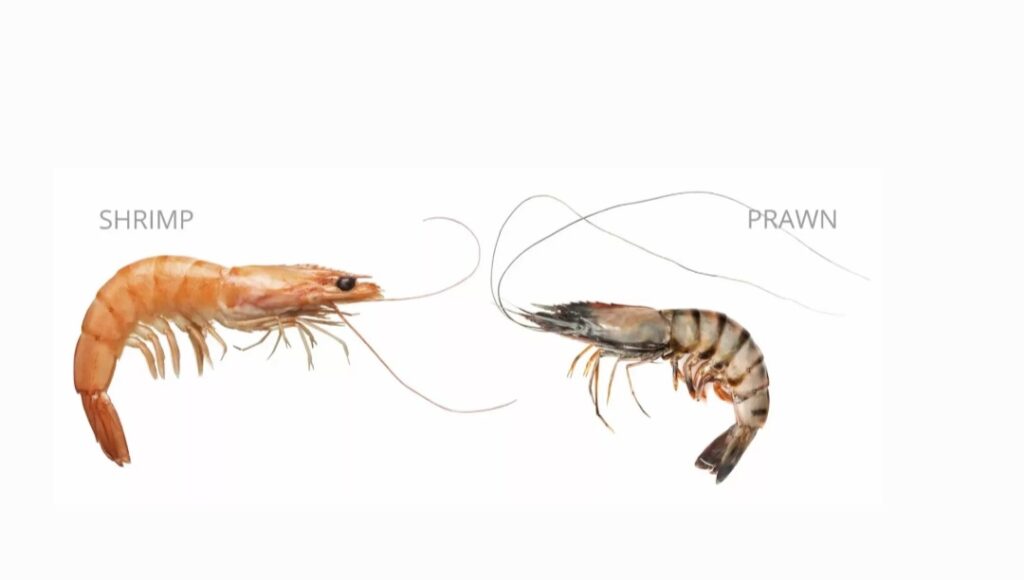
1. They belong to different suborders. Prawn belongs to the suborder Dendrobranchiata, while shrimp are in the Pleocyemata suborder.
2. They also belong to other families, with prawns belonging to Penaeidae and shrimps belonging to Caridea.
3. Prawns are primarily found in freshwater habitats like rivers and lakes. Shrimps, on the other hand, live exclusively in saltwater habitats.
4. Prawns are usually larger than shrimps and have straighter body shapes; they can grow up to 6 inches and above.
In comparison, shrimp are smaller, with most species being between 1 and 3 inches long.
5. Prawns release their fertilized eggs into the water and leave them to grow and care for themselves.
On the other hand, shrimps carry their eggs on the underside of their bodies until they hatch etc.
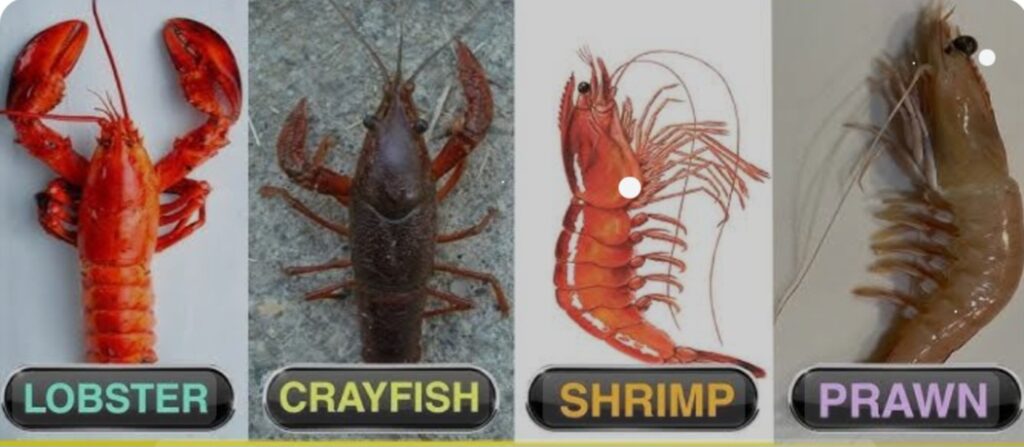
BENEFITS OF SHRIMPS
Shrimps are not only beneficial in the business sector but are also beneficial in other ways. They are healthy food diets in human and Livestock feeds. It is rich in minerals and vitamins which can treat numerous diseases in the human body. They are also rich source of selenium that prevents the growth of cancer cells in human body. They are like fish that is rich source of Omega 3 fatty acids which is good for heart and help in reducing cholesterol level.
1. RELIEF OF MENSTRUAL PAINS: Shrimps contain Omega 3 fatty acids which help balance the negative effects of Omega 6 fatty acids and aid the alleviation of menstrual cramps for women. It also promote healthier blood flow to the reproductive organs.
2. STRENGTHEN THE BONES: Shrimps contain proteins and vitamins and nutrients such as calcium, phosphorus, and magnesium that help prevent bone degeneration. They also help slow the effects of ageing bones.
3. SOURCE OF MEAT: The main source of food in shrimps is the meaty abdomen after the exoskeleton is removed. The meat contains zero carbs, very low in calories and rich in protein.
4. The fat content in shrimps is low.
5. Shrimps are treasure trove of vitamins and minerals. They contain nutrients such as iron, calcium, sodium, phosphorus, zinc, magnesium and potassium. They are also rich in vitamins A, E,B6 and B12.
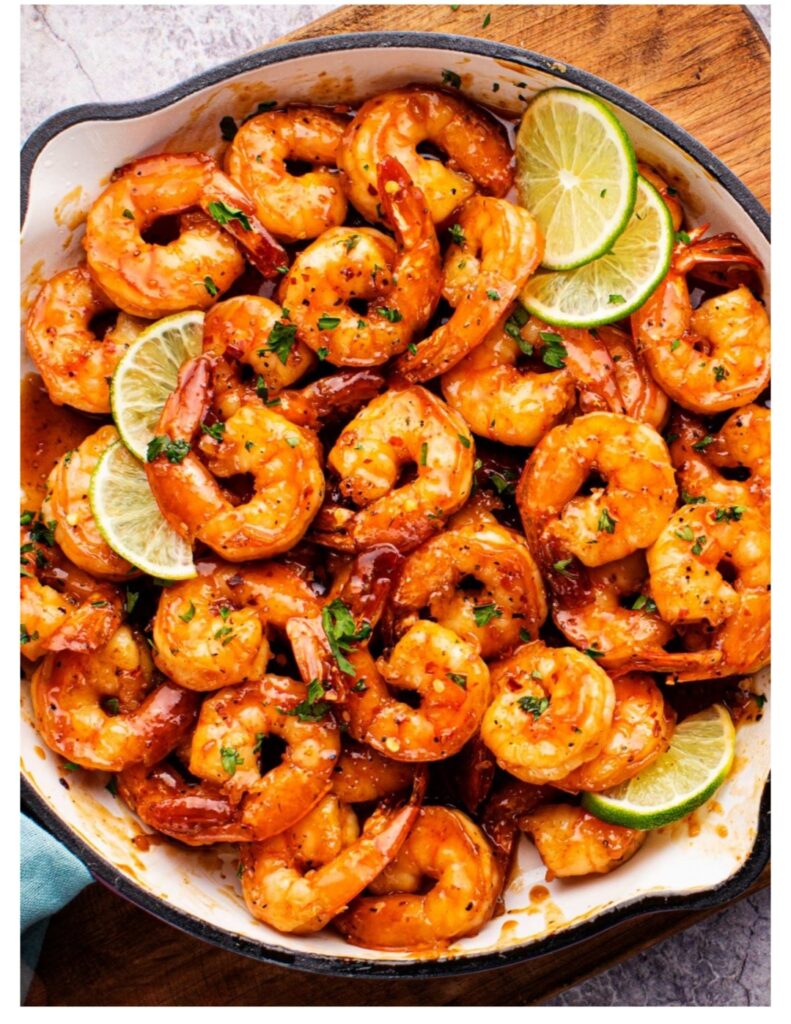
6. AIDS COGNITION: The high iron content in shrimps aid blood flow. It increases oxygen flow to the muscles and brain. This ensures strengthening and endurance and improves memory and concentration.
7. IODINE: Iodine helps the human body to produce thyroxine (thyroid hormone) needed for development of brain during infancy and pregnancy.
8. HELP LOSS WEIGHT: The protein and vitamin D with no carbohydrate help loss weight.
9. The astaxanthin is a powerful antioxidant found in shrimps that reduces the sign of aging in the skin of human.
10. They contain zinc that help increase leptin level in the body of human. Leptin is an integral part of the body that helps regulate fat storage, appetite and overall energy use.
11. DELAY AGEING: Shrimp meat contain heparin like compound, a substance that relates muscular degradation. It also help treat neovascular AMD.
12. The Asthaxanthin also help relief eye fatigue.
13. IMPROVE HEART HEALTH: Shrimp meat contains fibeinolytic enzyme used for thrombolytic treatment which help prevent dangerous blood clotting. The enzyme can help prevent dangers of cardiovascular diseases.
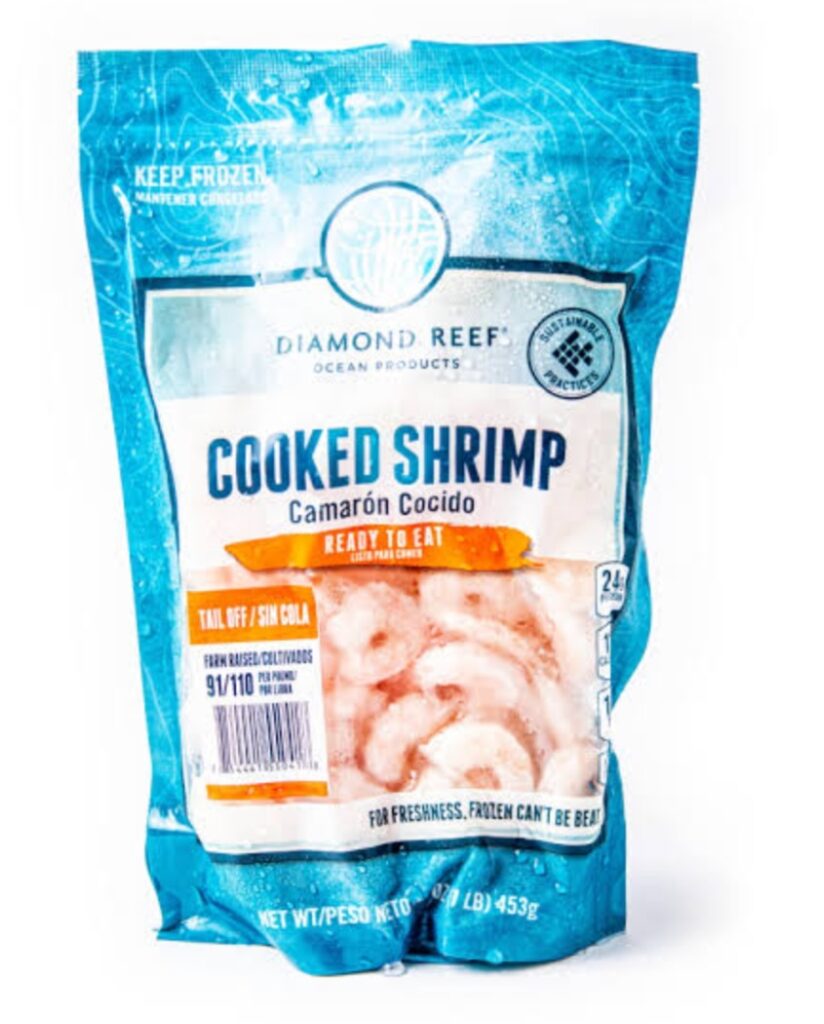
14. The Omega 3 fatty acid eliminate damages caused by cholesterol in the blood stream.
15. STRENGHTENS HAIR: Zinc deficiency can cause hair loss. zinc in the body maintains and create new cells including hair and skin cells.
16. ANTI-AGEING PROPERTIES: Sunlight is one of the causes of skin ageing. Taking a meal of shrimps in diet can help build new skin cells, creating a glowing skin and not worn out or wrinkled faces.
17. Apart from the vast amount of minerals and vitamins found in shrimp meat, they also contain iodine, thiamin, riboflavin and niacin.
18. ASTAXANTHIN: This is a compound found in shrimps. It improves memory performance, improves survival of the brain cells and reduce the risk of brain inflammation diseases.
SIDE EFFECTS OF SHRIMPS
1. MERCURY: Mercury is harmful to human health. Shrimps contains some amount of mercury which can cause mercury poisoning, vision issues and decrease fetal health.
2. FOOD ALLERGIES: People who do not consume sea foods can be allergic at their first consumption of shrimps.
3. PURINES: Purine break down into uric acids in human body when cells die. Therefore, consuming high amount of shrimps promote uric acid flow in the body.
SHRIMP FARMING
Shrimp farming also known as shrimp aquaculture, is a method of cultivating shrimp in a controlled environment for human consumption. The controlled environment may be ponds, tanks, or raceways using freshwater or marine waters for raising the aquatic organisms.
METHODS USED FOR SHRIMP FARMING
TRADITIONAL METHODS
In traditional shrimp farming, fry are collected from the wild or concentrated through tidal water pumped into ponds. This method can lead to low yields and inconsistent production because of the seasonal supply of fry, inefficient control of predators and competitors, full dependence on natural food and inadequate pond depth. But gradually, some improvements were being made over the traditional farming methods. Stocking density of shrimp ponds are increased through concentration of fry by pumping more tidal water into the ponds. Also, pond depth has now being increased to minimize fluctuations of environmental parameters. As a result, pond yield has correspondingly increased. However, expansion of the shrimp farming industry is still restricted due to the inconsistency in fry supply.
Today, mass production of hatchery-bred shrimp fry has being achieved especially in Asia. This hatchery has being accompanied with improved pond culture techniques, increasing yield from traditional shrimp ponds to about 500–800 kg/ha/year without supplementary feeding. But with supplementary feeds coupled with intensive pond management, pond yield can be further increased to 5–10 tons.

MODERN FARMING TECHNIQUES
The modern shrimp farming techniques also referred to as intensive method of shrimp culture operation is more sophisticated compared to the traditional methods. It requires very high financial and technical inputs with rearing facilities such as: earthen ponds or concrete tanks etc. This culture operation completely depend on hatchery-bred fry, high stocking density can be achieved, formulated feeds are used, application of aeration to increase dissolved oxygen level in pond water and intensive water management are utilized in this system.
Pond or tank sizes have increased from 500 m2 –5,000 m2 as found in Japan, Taiwan, Philippines and Thailand. The ponds now have dikes made of pure earthen material, earth coated with plastic sheets or concrete with separate inlet and outlet gates or small water inlets for flow-through purposes. Drain out system is in the form of a centrally located drain pipe, a drain gate (sluice or monk type) or a combination of both.
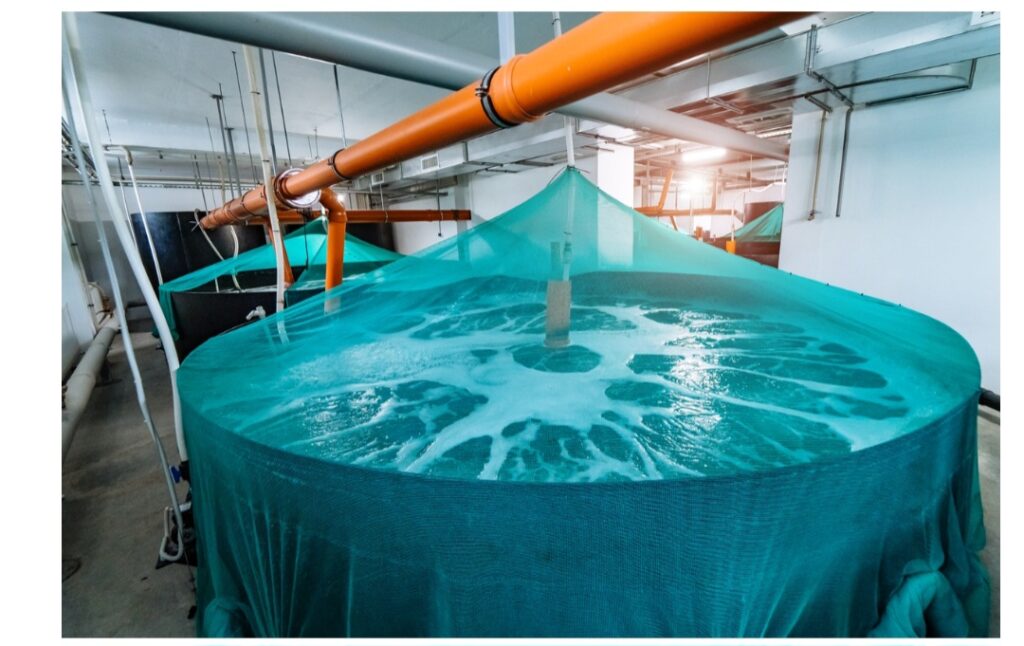
ADVANTAGES OF MODERN TECHNIQUES OVER TRADITIONAL SYSTEM
1. Modern techniques can increase shrimp yield.
2. Stocking density can be increased.
3.Regular pond size
4. Well aeration ponds
5. Use of high proteineous formulated feed etc.
SITES SELECTION FOR SHRIMP CULTURE
The selection of a suitable site always play a major role in shrimp farming. To determine a suitable site for shrimp farming, there is need to gather informations like: information on topography, ecosystem, meteorological and socioeconomic conditions in relation to farm design, species compatibility and economic viability. All of these must be analysed for proper profitable shrimp farming. All these will guide the farmer in making good judgment of the site. The site must have good water quality, availability of freshwater and assess to sea water, the land must be flat and adequate infrastructures must be in place.
CLIMATIC CONDITIONS SUITABLE FOR SHRIMP FARMING
Shrimps are affected by warm climate. Tropical and subtropical climate are suitable when the culture period is too long. While warm temperate climate periods are appropriate when the culture period is short.
Shrimps can survive at a temperature of about 93°C. Above which their growth is impaired and they die. At 65°C, they will grow slaugishly.
WATER QUALITY AND WATER MANAGEMENT
Factors considered when choosing water quality for shrimps farming include: physico-chemical, water temperature, dissolved oxygen ,microbiological characteristics of water , salinity and water pH etc. The most important factor is the water pH. The prefered pH range of the water is from 7 to 8.5. Also, the level of oxygen saturation throughout the water column is of important because the shrimps need oxygen to breath and algae and planktons need it to grow. Fluctuations in dissolved oxygen level should be monitored as the prefered oxygen level should not be lower than 4 ppm. Below which the shrimps will die.
The water must not be too turbid. Water with very heavy silt load can cause siltation problems in the water supply system, eg., clogging of filter nets or net enclosures and increasing sedimentation at the pond bottom. The water is preferably to be rich in microorganisms.
Water salinity variation should also be monitored when producing shrimps. Optimal level varies from species to species. For instance, the tiger shrimp (Penaeus monodon) grows faster at 15–30 ppt. The white shrimp (P. indicus and P. merguiensis) tolerate higher salinity ranges (25–40 ppt). Ideally, salinity should remain uniform at normal weather and should not drop abruptly during rainy days. Therefore, the quantity and quality of the water are crucial for shrimps production. It is important for proper growth and survival of the shrimps and prawns.
Water management should therefore involve maintaining a correct pH, water temperature, dissolved oxygen level and salinity.
TIDAL FLUCTUATIONS : The tidal characteristics of the proposed site should be known. Knowledge of this parameter is of extreme importance in determining pond bottom elevation of dike, slope ratio and drainage system.
Areas best suited for shrimp farming should have moderate tidal fluctuations preferably 2–3 meters. In areas where the tidal range is greater than 4 meters, the site may prove uneconomical to develop or operate as large and high pond dikes will be required. In areas where tidal range is less than one meter, water management will be expensive as thus will require the use of pumps.
A salient point to consider in relation to tidal range is the knowledge of the occurence of highest high and lowest low water levels. This should be known so that the size and height of the perimeter dike can prevent flooding. In addition, direction and strength of water current should be known for provisions on dikes construction to reduce erosion.
Lastly, the proposed area must not be adversely affected by any industrial or agricultural pollution.
SOIL : The types and texture of the soil of the area should be analyzed before settling on a site for shrimp farming. Soil samples must be taken at random location, preferably up to a depth of 0.5 meter and subjected to physical and chemical tests to determine the acidity, amount of organic load, level of fertility and physical composition.
The soil at the proposed site should have enough clay contest. This is to ensure that the ponds constructed will hold water. Good quality dikes are usually built from sandy clay or sandy loam materials which harden and easily compacted. The dikes will not crack in dry weather. Clay-loam or silty-clay loam at pond bottom promotes growth of natural food organisms. Diking materials made of undecomposed plant matter and alluvial sediments should be avoided.
Most ponds developed along the coastal areas with dense mangrove vegetation often have acid-sulphate problem during the first few years of operation. This is due to the accumulation of pyrites (iron sulfide) in coastal soil. Breakdown of pyrites is minimal in submerged soil.
Alleviating acid sulphate conditions in ponds requires the use of lime and removal of acid by leaching and flushing.
TOPOGRAPHY : It is essential to have a detail topography of the selected site for pond design and farm layout. flat lands are suitable for pond construction. Coastal sites where the slopes run gently towards the sea are easier for pond development. Such areas require less financial inputs to excavate the land as the soil is soft and water is available to assess. Filling and draining of water is easily facilitated by gravity.
In areas where the above conditions are not available, mechanical pumps are employed ro pump water into the pond and to drain water likewise. One major constraint associated with this the topography of this area is the availability of sufficient quantity of soil for dike construction. Soils for dike construction are obtained from excavation of ponds or from above ground bunds. It is uneconomical if diking materials are transported from outside the site.
VEGETATION: The type of vegetation in the area can be, to some extend, indicative of physical elevation and soil type. Dominance of the mangrove plants Avicennia spp. is an indication of good and productive soil. Outgrowths of Rhizophora spp. which are usually characterized by dense prop root systems usually signifies soil types that are coarse and acidic.
All vegetation at the site should be cleared first before any land development should take place. Clearing operation increase the cost of production.
OTHER FACTORS: Other factors to consider include: source of fry to stock, assessibility to farm site, availability and quality of labor, peace and conflicted areas, nearness to market, storage and processing facilities, availability and source of electricity and water supply, marketing channels and facilities etc.
POND PREPARATION/ CONSTUCTION
To construct the pond, all weeds, debris or organic matter should be removed, the ground must be levelled, the perimeter wall and water inlet and outlet must be constructed. The size of the pond must be sufficient enough for the good growth and to obtain healthy and quality products from the farm so as to earn good return.
The pond should not/be more than 4 feet deep and should be well designed to have either a circular or square shape. The base of the pond must have a clean surface with the recommended pH range.
Suitable disease resistant chemical fertilizers should be applied to the side surface of the pond so as to keep away the selected fry from diseases in the pond. Also, organic manure like cured cow manure should be applied. This helps improve fertility and reproductive capacity in the pond. It also enhances the growth of plants and planktons which are food for the shrimps and prawns.
The pond should be filled with clean water, leave for about 7 to 10 days after filling and then stocked. This will ensure good growth in the pond.
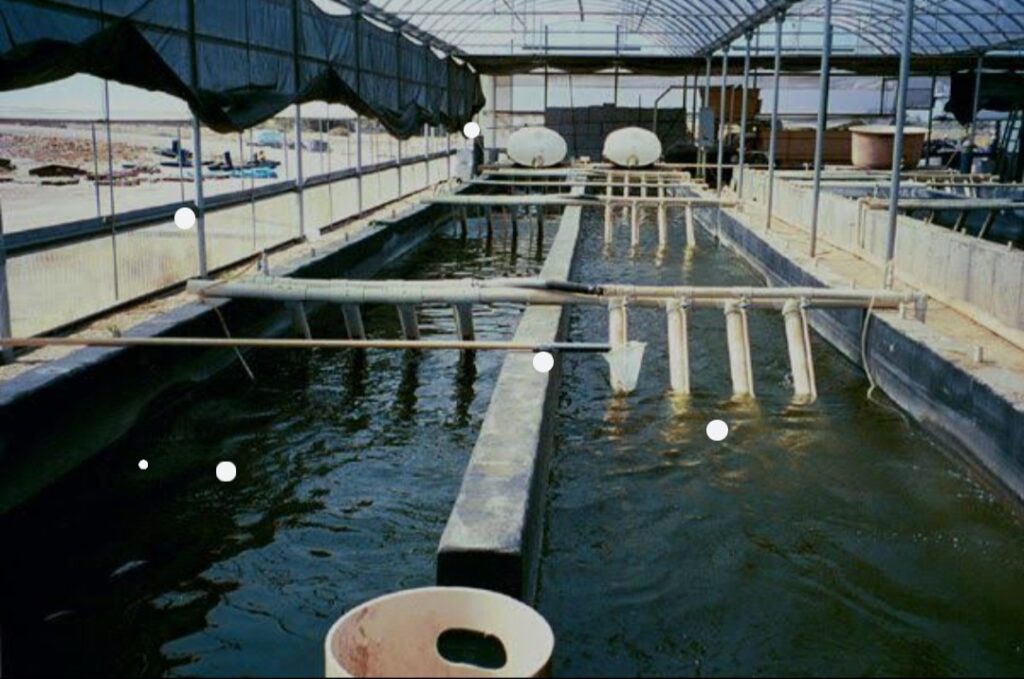
SPECIES SELECTION
BREEDS OF SHRIMPS
There are various species of shrimps. They include:
prawn pistol shrimp, coral shrimp (Pandalus montagui), firefly shrimp etc. To select breeds of shrimps for farming, farmers should select breeds that are fast growing, high yielding, and should consider the climatic condition of their area or locality.
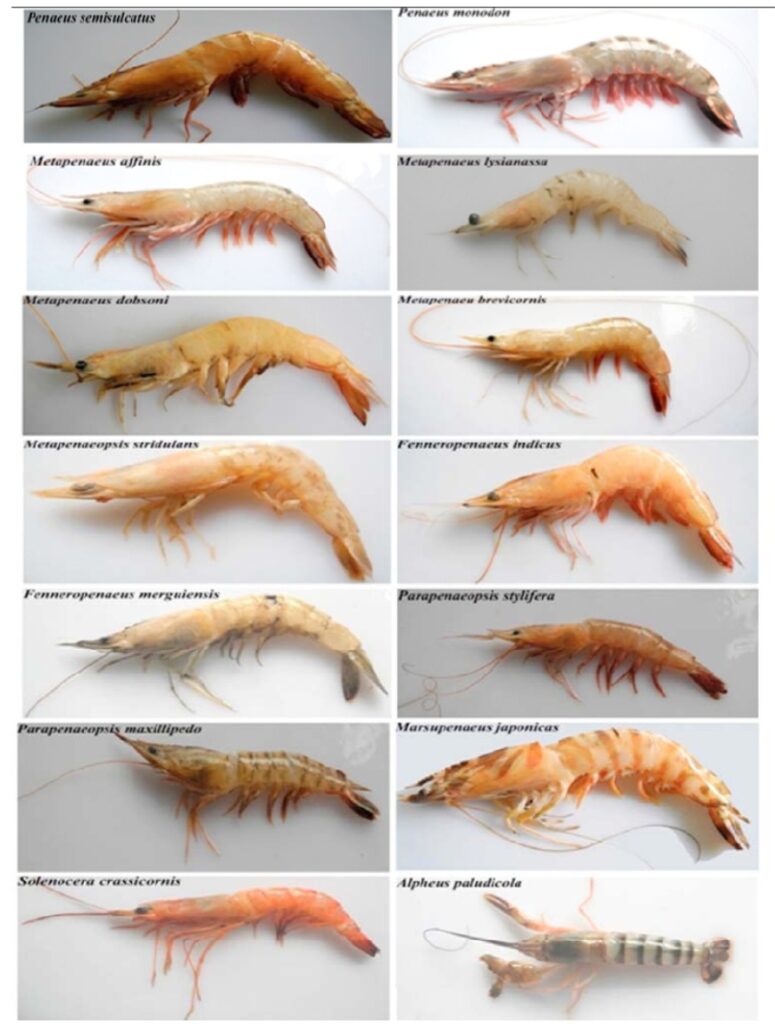
1. The common European shrimp, or sand shrimp, (Crangon vulgaris ,Crago septemspinosus), occurs in coastal waters on both sides of the North Atlantic and grows to about 8 cm (3 inches); it is gray or dark brown with brown or reddish spots. The shrimp Peneus setiferus feeds on small plants and animals in coastal waters from North Carolina to Mexico; it attains lengths of 18 cm (7 inches). The young live in shallow bays and then move into deeper waters. Crangon vulgaris and Peneus setiferus are commercially important, as are the brown-grooved shrimp (P. aztecus) and the pink-grooved shrimp (P. duorarum).
2. The edible river shrimps of the genus Macrobrachium (Palaemon) are found in most tropical countries.
3. The pistol: shrimp, Alpheus, which grows to 3.5 cm (1.4 inches), stuns prey by snapping together the fingers of the large chelae, or pincers. In the Red Sea, species of Alpheus share their burrows with goby fishes. The fishes signal warnings of danger to the shrimp by body movements. The coral shrimp, Stenopus hispidus, a tropical species that attains lengths of 3.5 cm (1.4 inches), cleans the scales of coral fish as the fish swims backward through the shrimp’s chelae.
4. Fairy shrimp, so called because of their delicate, graceful appearance, superficially resemble true shrimp but belong to a separate order, the Anostraca.
Shrimp species cultured in Asian countries belong to two genera (Penaeus and Metapenaeus). Among the dozen species cultured, Penaeus monodon, P. japonicus, P. merguiensis, P. indicus, P. orientalis and Metapenaeus ensis are the most important ones.
5. Penaeus japonicus and P. orientalis:
The spawners of Penaeus japonicus and P. orientalis are readily obtained in large numbers from the wild. The shrimp is hardy and can withstand handling. The survival rate of the adult shrimp of these species for long distance transportation is high. However, the species cannot tolerate low salinity and high temperature. P. japonicus prefers sandy bottom in grow-out ponds and grow fasts in high protein (about 60%) diet feed. The other temperate species, P. orientalis which is being cultured commercially in China and Korea, has a single pronounced spawning season in spring. Since both are temperate species, the period of hatchery operation is limited to the warmer seasons only.
6. Penaeus monodon:
Known as tiger or jumbo shrimp, is the most common species in Southeast Asian countries. It is one of the fastest growing species among the various shrimps that can be cultured. In pond conditions, shrimp fry of about 1 g in weight grow to a size of 75–100 g in five months at a stocking density of 5,000 per hectare. Some can grow up to 25 g in 16 weeks in tanks stocked at 15/m2 ; others can grow up to 42 g in 210 days in earthen pond and to 35 g in three months in tanks stocked at 15/m2 . The tiger shrimp is a euryhaline species and grows well in salinities ranging from 15 to 30 ppt. It is hardy and not readily stressed by handling. Presently, the major supply of its fry is still from the wild but the supply is sparse. Although several hatcheries have been established notably in the Philippines. Taiwan and Thailand, fry production is not consistent due to the full dependence on spawners caught from the wild. Until broodstock in captive condition can be made to mature and spawn, hatchery production of this species still has to depend on wild supply of spawners.
7. Penaeus indicus and P. merguiensis:
The biological characteristics of both species are generally the same. Many fish farmers are not able to distinguish the two species from each other. There are behavioral differences which help easy distinction. P. indicus prefers sandy bottom and is difficult to harvest by draining the pond while P. merguiensis is found most frequently in ponds with muddy bottoms moving out of the pond readily when water is drained. Gravid females of these species are easily obtained in large quantities from the wild. They can also mature in captivity. The larvae are more easily raised than those of P. monodon. However, the larvae are less hardy than other species, the juveniles and adults cannot withstand rough handling. Large quantities of fry can be obtained from natural spawning grounds. The growth rate in pond is relatively fast, reaching 12–15 g within the first three months of culture.
8. Metapenaeus ensis:
This species is very tolerant to low salinity (5–30 ppt) and high temperature (25–45°C). Fry are abundant in natural spawning ground and their survival rate in the ponds is usually high. This shrimp usually does not grow to a large size and has a low market price compared to other species. They are largely produced from trapping ponds or as secondary species of shrimp farms. The prawn or shrimps can be sold alive, fresh and frozen or processed depending on the market demand.
STOCKING THE POND
After the pond is constructed and ready, water management in place, the shrimp larvae are then introduced into the pond. The larvae should be purchased from hatcheries that specialize in shrimp and prawn breeding.
REPRODUCTION
The female shrimp may lay from 1,500 to 14,000 eggs, which are attached to the swimming legs. The swimming larvae pass through five developmental stages before becoming juveniles.
NURSERY PHASE
A nursery phase can reduce the risk of stocking post-larvae (PL) from hatcheries directly into grow-out ponds. In a nursery, PLs are stocked in small ponds or tanks for 30 days to enhance their immune systems. At 30 days, they are ready to be moved to the grow-out ponds. They are collected using a scope net or bag net. They undergo several growth stages including juvenile stage before becoming big enough to be called prawns. This takes more than 3 months.
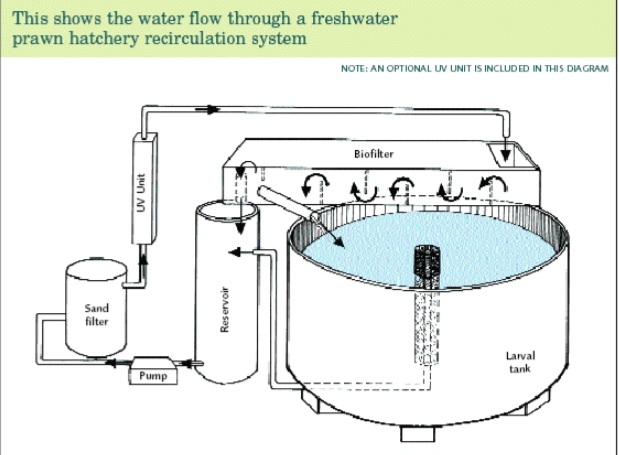
FEEDING
Shrimp are omnivorous and will eat almost anything they find. Careful managed feeding regime is required. They feed once in a day. Shrimps do feed on high proteineous diets that include fish meal, soybean meal with other suppliments. The adult or matured shrimps should not be raised along side with the fry or juvenile as the smaller species become prey to the bigger species.
In traditional system, the food of shrimps mainly consist mostly of small plants and animals, although some shrimp feed on carrion. In intensive farming, shrimp are fed a mix of marine and terrestrial ingredients like fish meal and soybean meal.
Also, they feed on pelletized or commercial feeds. In an ecologically balanced ponds, they can feed on growing algae, larvae, and planktons. Natural foods are much prefered to supplementary feeds as this can increase cost of production.
Supplmentary feed is only required to increase growth and quality of production. The supplementary feed consist of agricultural and Livestock by- products, cheap feeds like broken rice, vegetables, tapioca roots, trash fish and Livestock feeds, all mixed in adequate proportion and produced in pellet form. The pellets must be produced in such a way that it sinks to the bottom of the pond quickly when fed to the shrimps and remain intact for atleast few hours till the shrimps completely feed on them.
The feeding schedule is usually adjusted based on the growth rate of the shrimps.
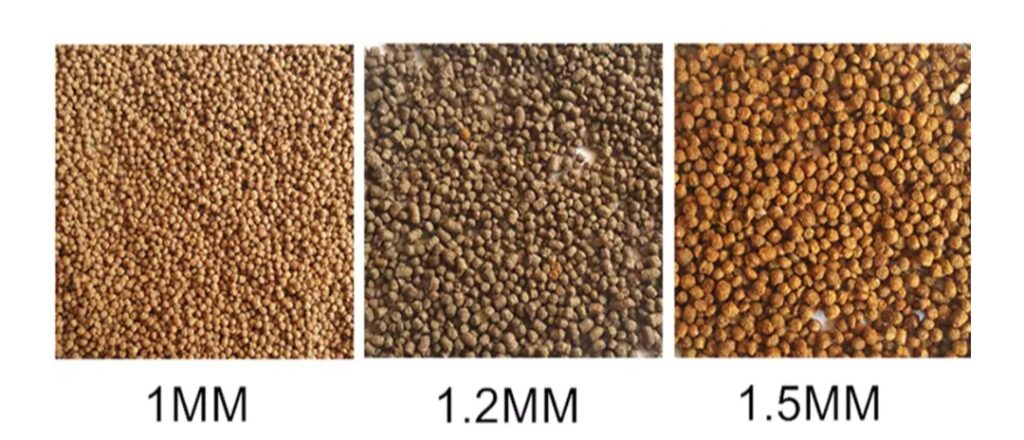
WATER QUALITY MONITORING
Regular water monitoring is essential to ensure that the pond environment is optimal for the shrimps growth. The parameters to monitor include temperature , dissolved oxygen, pH and salinity.
The water should also be checked for any toxicity, dissolved chemicals or substances or predators and pathogens on regular bases.
Water quality maximizes survival and growth rate of the shrimps. Paddledwheels and aspirations are usually used for aeration of the water. Aeration will generate a current that causes the sediments to accumulate at the center of the pond, thus, keeping clean feeding areas around the pond edges. As quality of shrimps increases, the level of aeration required also increases to keep the level of the dissolved oxygen in the water.
Water fountains can also be used for aeration. This will provide an aesthetic attraction and also aeration of the pond.
Also, it is important to note that shrimps do moult to increase in size because they are invertebrates. When they moult, the exoskeleton sinks to the bottom of the pond and may rot with feeds, this affecting the dissolved oxygen and creating poor water quality. Moulting can be recognized by the existence of exuviae in the pond. Therefore, to solve the problem of moult rottening, the soft exoskeleton must be less than 5% in the pond. This can be achieved by scheduled harvesting of the shrimps between two moultings.
DISEASES
Shrimps farming is susceptible to disease outbreaks. Therefore, proper disease management is crucial to maintain a healthy stock.
Shrimp farming can be affected by viral diseases like white spot syndrome virus (WSSV), yellow head disease virus (YHDV), and Taura syndrome.
CONTROL AND TREATMENT
1. Regular monitoring for signs of diseases should be carried out.
2. Appropriate treatments using antibiotics and prebiotic should be carried out to prevent and treat disease outbreak.
3. Maintaining water quality
HARVESTING
This is one of the final steps in shrimp farming. Shrimps reach table size in 3 months. Timing of the harvest is crucial to maximize yield and minimize lossess.
Harvesting involves draining of the pond or tank or raceways and the shrimps are captured. Some farmers uses cast nets to capture the shrimps. This is common in a water recirculatory system used in the farm.
The cast nets can be of different mesh sizes as farmer may only want bigger size shrimps living the smaller sized ones unharvested. The shrimps are then processed for sale.
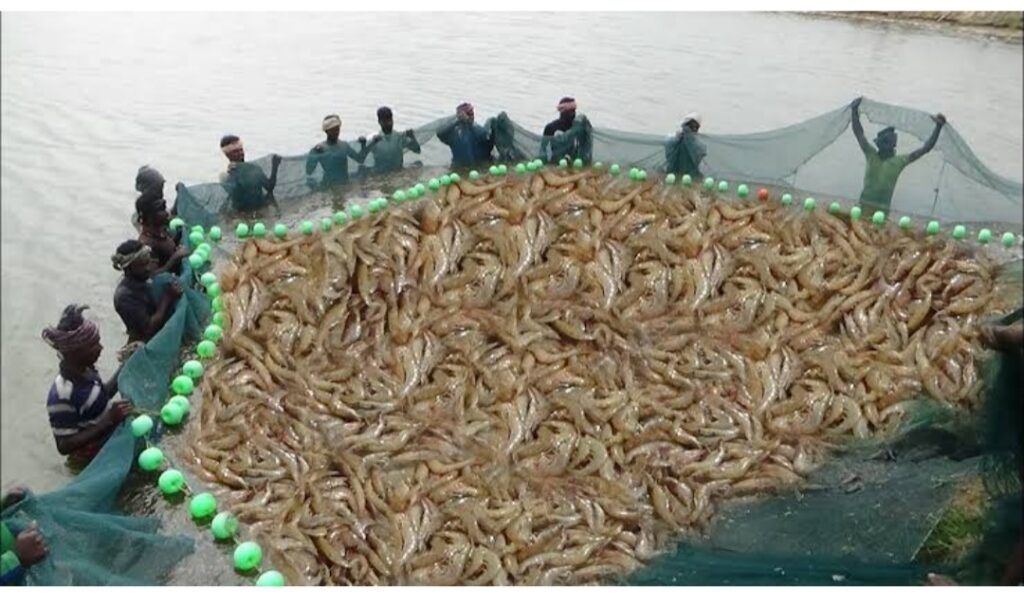
SORTING: Shrimps, after harvesting are usually separated based on sizes, weights and softness. Based on sizes, there is the large sized, jumbo size and the soft shelled shrimps.
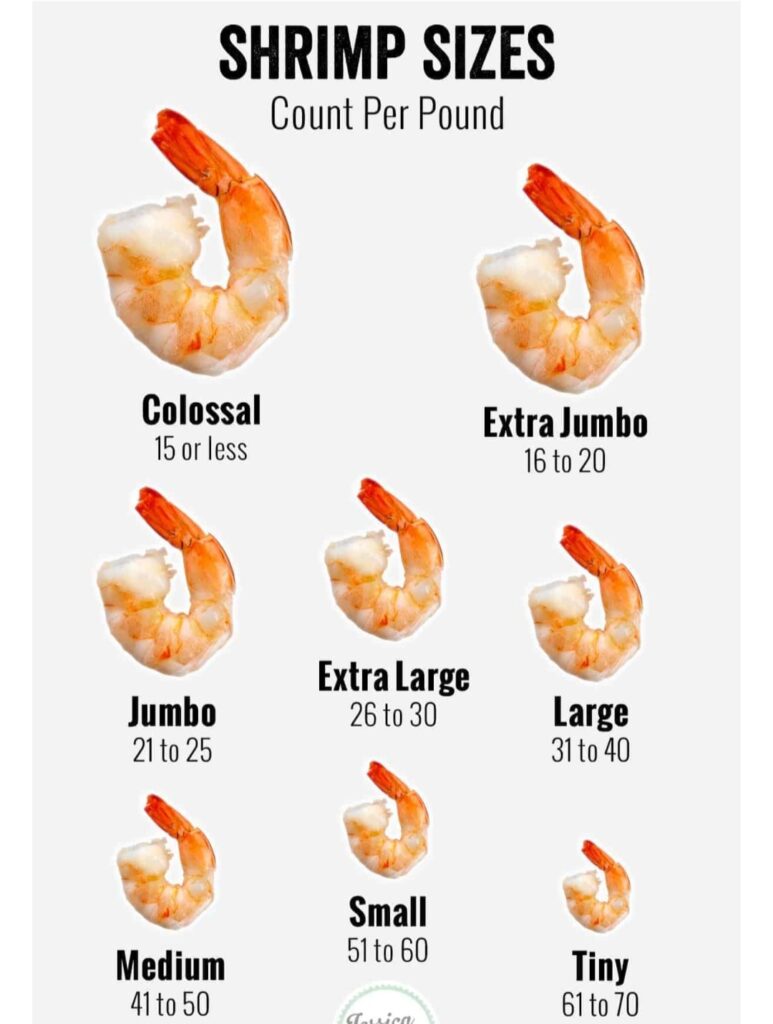
MARKETING: Farmers source for buyers and negotiate price with them based on the size of shrimps or prawn harvest.
In conclusion, shrimp farming is a complex process that involves careful management so as to achieve maximum profit.
